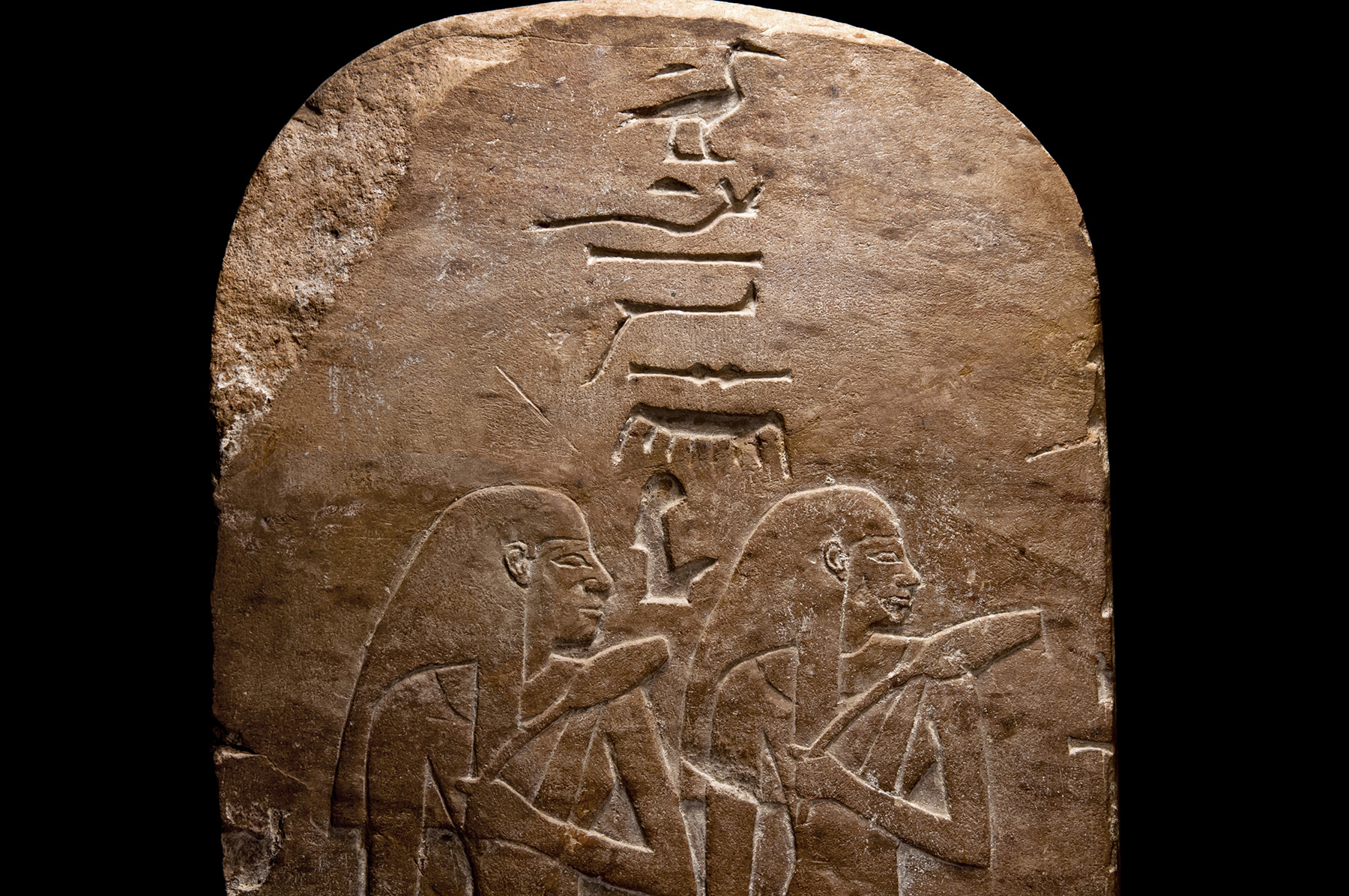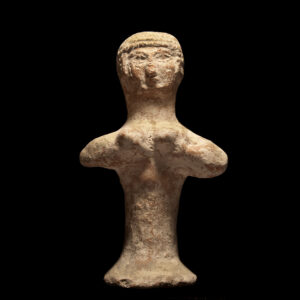Carved Limestone Bas-Relief from the Egyptian New Kingdom, 18th Dynasty
From the 18th dynasty of the Egyptian New Kingdom, this ancient Egyptian Bas-Relief (Bas Relief) was carved from a pink limestone and depicts two female figures, their left arms raised across their chest holding lotus buds. In their right arms they hold a stylized menat, a ritual object to foster fruitfulness and good health in women. Both wear long close fitting garments.
Inscribed Egyptian Hieroglyphics with Name ‘Nes-Noub’
A beautiful Egyptian hieroglyphics inscription above the figures gives the name ‘Nes-Noub‘ (Noub is also known as Chnoubis among other variants). The style of the carving allows a fairly precise dating to the reign of Amenhotep I (r. 1514 – 1493 BCE) at the very beginning of the 18th Dynasty. Features such as the well defined nostrils, giving the nose a pinched appearance are typical of this period.
From Time of Pharaoh Amenhotep I (Amenophis I) son of Ahmose I
Amenhotep I, also called Amenophis I, was the son of Ahmose I (r. 1539 – 1514 BCE), the founder of the 18th dynasty (1539–1292 BCE). Ahmose I completed the expulsion of the Hyksos (i.e. Asiatic rulers of Egypt), invaded Palestine, and re-exerted Egypt’s hegemony over northern Nubia, to the south. He effectively extended Egypt’s boundaries in Nubia (modern Sudan).










